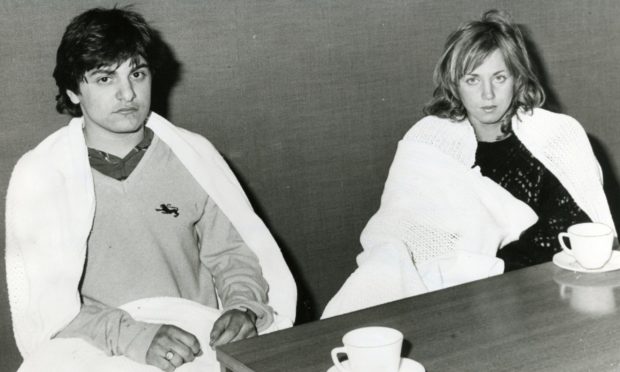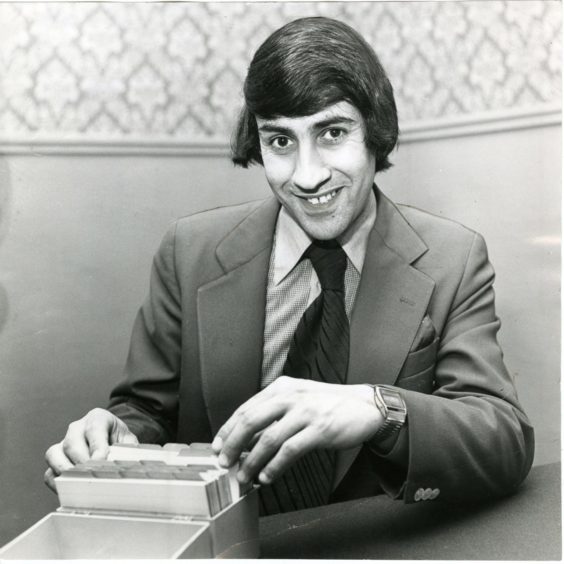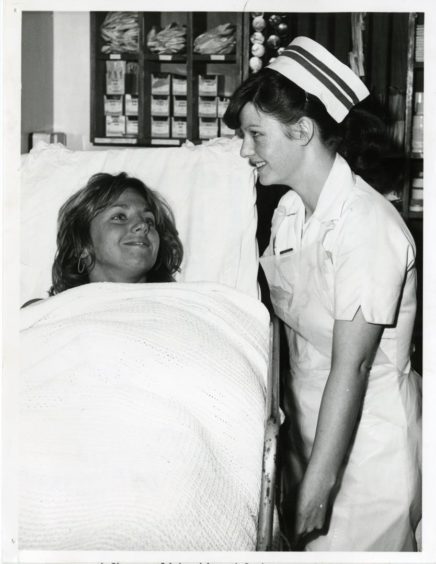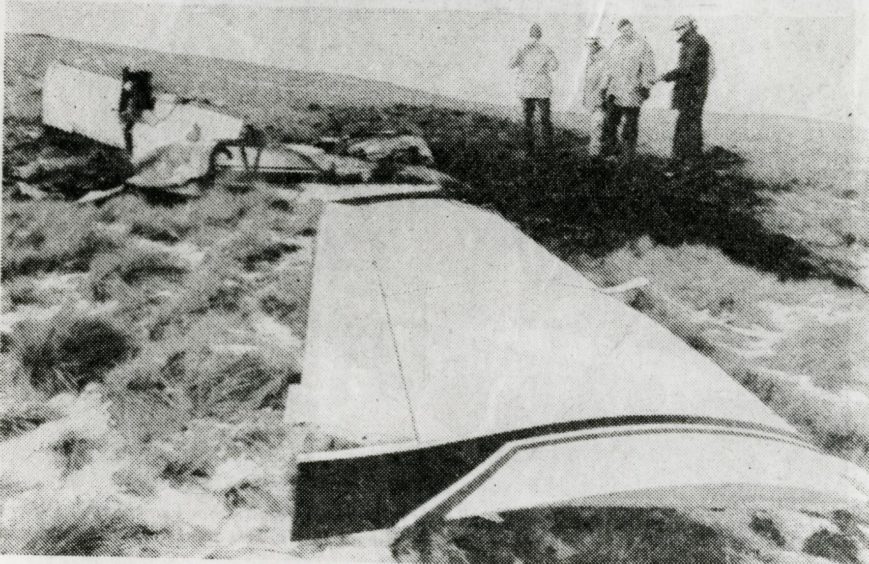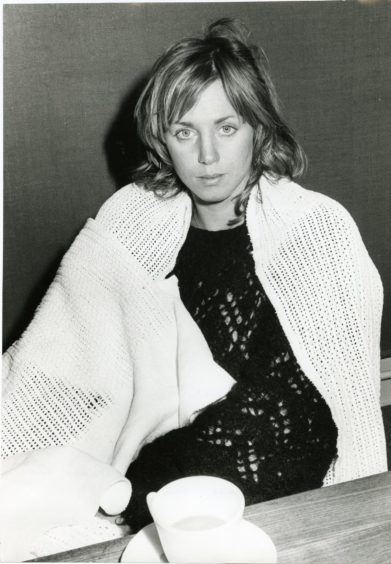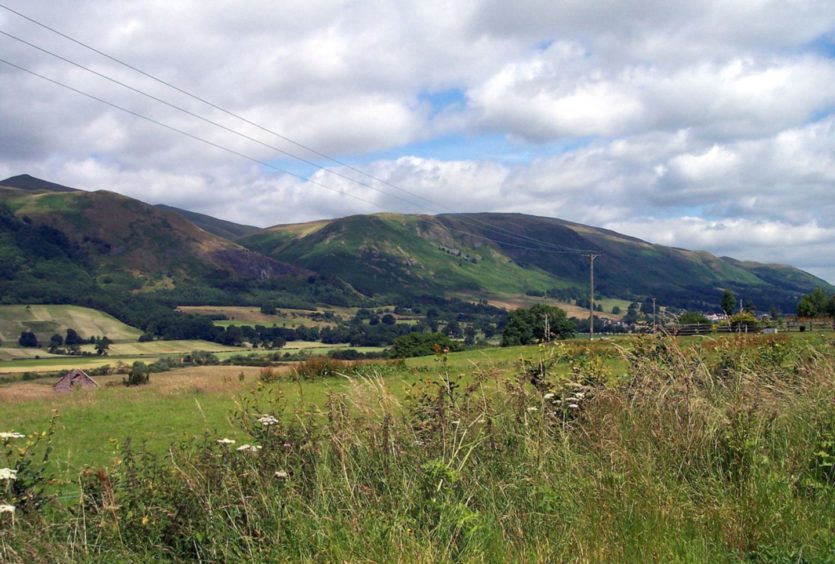Four people escaping from the wreckage of a burning aircraft is a waking nightmare usually reserved for a Hollywood movie set.
But this was a real-life drama worthy of its own Tinseltown script which happened 40 years ago when a plane from Dundee went down in the wilds of Perthshire.
Ronnie Harris, Rico Eusebi, Julie Hanson and Allan Foley disappeared during a flight from Dundee Airport to Prestwick on February 26 1981.
The plane hit turbulence 20 miles outside Dundee
Mr Harris, a hypnotherapist, was in Aberdeen on business with his part-time secretary Miss Hanson before travelling to Dundee for his regular consultations.
The four-seater single-engine Grumman Tiger was taking them back to Prestwick and left Dundee Airport at 8.40pm and was due to land at 9.20pm.
Also in the plane were Mr Foley, who worked with air traffic control at Prestwick, and his colleague Mr Eusebi, who went along for flying experience.
Reports from the time said Mr Foley was piloting the plane when it appeared to hit turbulence 20 miles out of Dundee.
Mr Harris, who was a more experienced pilot, took over the controls, and, as they came through a cloud bank the plane started to ice up.
It lost radio communication with air traffic control at Abbotsinch Airport, Glasgow, at 8.55pm.
Their night-long ordeal in sub-zero temperatures started when their plane smashed into a snow-covered hillside on the Ochils, which is a range of peaks that stretches from Stirling, in the west, to the Firth of Tay, in the east.
The single-engine plane burst into flames on impact.
Miss Hanson’s long blonde hair caught fire and she had to struggle to get her seatbelt off before she could leap to safety.
Two of the men, pilot Mr Harris, and Mr Eusebi, also scrambled free.
The third man, Mr Foley, was trapped inside the blazing wreckage.
The survivors found shelter and tried to keep warm
Mr Harris shrugged off his own injuries including a broken ankle to go back into the blazing plane to pull him to safety.
The four survivors wandered about in total darkness trying to find help.
Mr Foley could go on no further so they found shelter under an overhanging precipice and huddled together and tried to keep warm until light.
Miss Hanson was the only one with a coat.
The others had taken theirs off before the flight and they were burned when the plane burst into flames.
Mr Eusebi went for help at first light.
He walked for two hours through snow and heavy ground until he got to Whaick Farm at Blackford.
He banged on the doors and the windows until the farmer came out.
He lit the gas fire and gave Mr Eusebi a cup of tea to keep him warm before help arrived.
An RAF Wessex helicopter from Leuchars was already searching for the survivors after taking a run along the last known track the plane would have followed.
There was no working phone at the farmhouse and shepherd Peter Chalcroft ran to nearby Burnside Farm where Moira Taylor phoned the police.
The full-scale search ended when the RAF crew received a message from the police that Mr Eusebi had raised the alarm.
Shaking violently and in a state of shock
“There was a man standing there with only a thin jersey, jeans and a pair of cowboy boots on – he looked in a very bad state,” said Mr Chalcroft at the time.
“I took him in, sat him in a chair, and lit the gas fire to warm him.
“He was shaking violently and seemed to be in a state of shock.
“We don’t have a phone in our house yet so I rushed about half a mile to Burnside Farm while my wife made him a cup of tea and tried to keep him warm until help arrived.”
The RAF helicopter was diverted to the farmhouse where Mr Eusebi was able to provide rough directions to the downed plane.
Mr Eusebi was taken to Perth Royal Infirmary by ambulance suffering from bruising and exposure.
With directional guidance from Edinburgh Control, the helicopter crew found the remaining three passengers sheltering near the wreckage of the burnt-out plane.
The plane was found on the very top of the hill.
Two were winched up and the other was able to walk on board when the plane landed.
They were immediately airlifted to the Perth hospital.
Mr Foley suffered burns and was transferred to the burns and plastic surgery unit at Bridge of Earn Hospital.
Mr Harris suffered a facial fracture, bruising to the face, a broken ankle and frostbite in both feet.
Plane crash ordeal became national news in 1981
The plane crash made front page headlines across the UK and Miss Hanson relived her 12-hour ordeal to reporters from her hospital bed.
“We are lucky to be alive,” she said.
“We suddenly realised we were flying above higher ground than we thought.
“Ron knew the route quite well but hadn’t realised the ground was so hilly.
“Everything happened so quickly.
“The plane hit the ground and there was an explosion before it burst into flames.
“My hair caught fire and I couldn’t get my seatbelt undone.
“Ronnie managed to get the hatch open and everyone got out except Mr Foley.
“Ronnie went back and dragged him clear.
“It was very brave of him.
“The plane was still regularly exploding and so we decided to walk to the nearest farmhouse.
“It was very cloudy and we couldn’t even see the stars.
“I think we must have walked in circles for miles.”
Scottish hills are littered with crash wrecks
She said Mr Foley was badly burned and they knew they could go no further.
Flight Lieutenant Clive Roberts said: “Their condition was remarkable considering they had been involved in an air crash.
“They must have had a pretty rough night.”
Board of Trade investigators were also sent to the scene, which could only be reached by helicopter, or tractor, or on foot.
The Scottish hills are littered with the remains of crashed aircraft.
The majority came down during the last war and most were just left to lie where they fell including three men, all aged 21, who crashed in the Ochil Hills in 1943.
A trio of Spitfires cleared the runway at RAF Grangemouth on a formation flying exercise but poor visibility and weather conditions led to the three planes crashing into the southern face of King’s Seat Hill, near Dollar.
